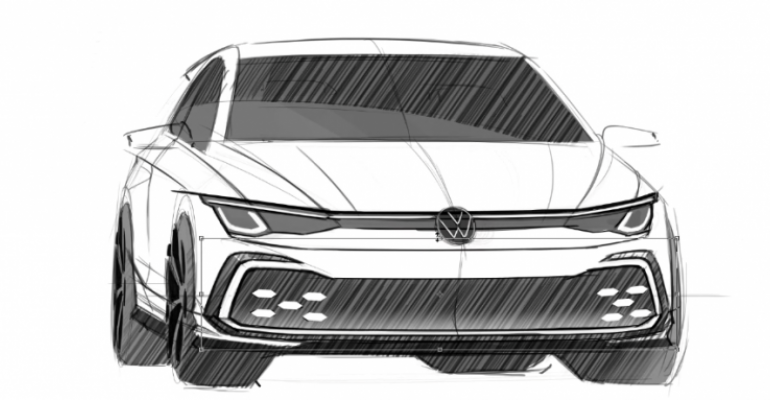Working from home isn’t all Zoom meetings and extended coffee breaks. Sometimes, you actually have to design a car. If you’re a designer for the Volkswagen Group, you have the tools you need to keep cranking on future product.
To explain how design work is continuing during the COVID-19 pandemic, VW Group Design chief Klaus Bischoff holds an online demonstration for journalists that digs into some of the realities of creating the way a car looks without being able to meet face-to-face.
Using a number of digital design tools, Bischoff moves from design sketches to a near-photo-realistic 2D image to a refined 3D representation, showing in about 30 minutes a digital work process that usually takes 18 months.
VW knows how long these things take because the automaker has been designing cars using these extended digital processes for at least 10 years and has been working with a more robust toolset for the past five, Bischoff says. This lets designers explore not only general exterior and interior views of the vehicle, but also in-depth, 3D views of every part of the car as well as enabling them to see what the completed vehicle would look like under various lighting conditions.
“Ten years ago we already had some (digital tools),” Bischoff says. “Five years ago we set up a toolset that allowed us to describe nearly all surfaces digitally. And from there we are doing more and more globally to describe the design content for the brand and, of course, also for the group.”
The sixth- and seventh-generation Golf models were partially designed using these tools, Bischoff says, while the eighth-gen Golf and ID. family vehicles were “truly digital designs (left)."
VW has even used digital representations to virtually approve aspects of new vehicle models, Bischoff says, but there are limits. “Up to a certain degree, for the final presentations, especially the interior, you need to have physical representations. That will not (change quickly) as we are selling real-world objects to our customers.”
There are limits to what is possible for designers who are working from home as well. Bischoff says most of the design team is working remotely and is able to access VW’s powerful server architecture, but for presentation purposes large PowerWalls are required. These are 59-ft. (18-m) -long, 15-ft. (4.5-m) -high screens that allow engineers to display cars in 4K resolution for board members and as a way to work collaboratively, he says. Since these screens only exist in VW facilities, this part of the job cannot happen while stay-at-home orders remain in place.
VW’s digital data flow allows changes to be applied rapidly as new cars are designed, but that doesn’t mean the overall process of designing a car is that much faster, Bischoff says.
“Cars have become more and more complicated,” he says, pointing to autonomous-driving and driver-assistance systems that did not need to be designed in decades past. “We also have cars …that have been designed very fast, like the ID. Buggy. But complexity has grown and team size has grown as well. In about 30 years, team size has been tripled but the product portfolio has gone through the ceiling.”





